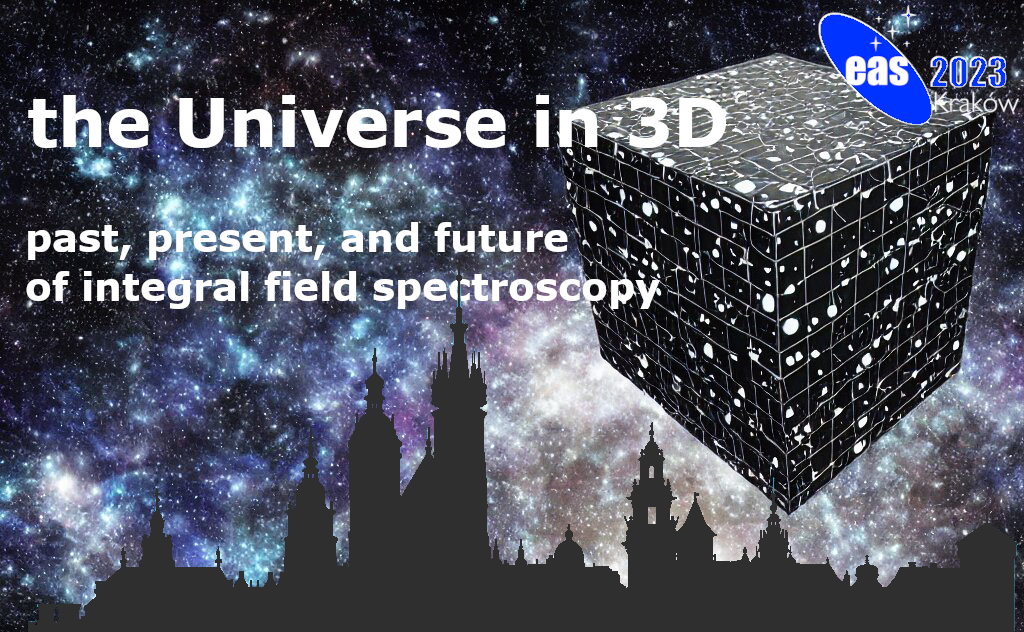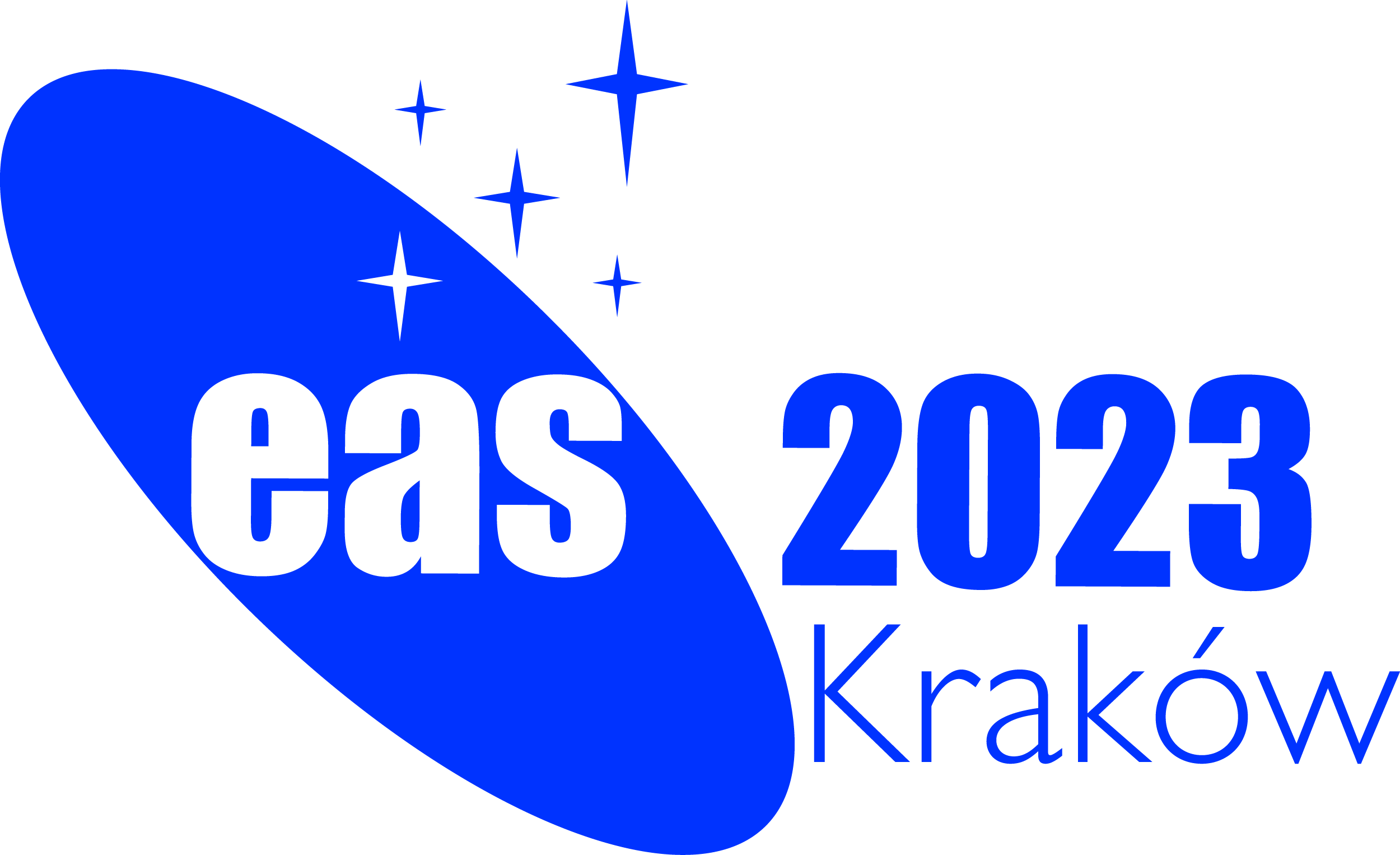Special Session SS9
12 July 2023
The universe in 3D: past, present, and future of integral field spectroscopy

Aims and scope
Since the first idea was proposed by G. Courtes in 1982 and its first application with TIGER (first light in 1987) on the Canada-France-Hawaii Telescope, Integral field spectroscopy (IFS) has become a fundamental workhorse to expand our understanding of the Universe. This novel technique has revolutionized our view of a plethora of astronomical topics, ranging from the planet formation and debris disks, to the study of the interstellar medium of our Galaxy, all the way to the study of the galaxies and black holes across cosmic times.
In recent years, a decisive change in gear has been reached thanks to the availability of statistical surveys of thousands of objects (such as, e.g., SDSS/MANGA, CAHA/CALIFA, HET/HETDEX), the advent of new wide field IFUs (e.g., VLT/MUSE, KECK/KCWI, GTC/MEGARA), the progresses in high contrast IFUs (e.g., VLT/SPHERE), and the flexibility of IFS in the infrared (e.g., VLT/KMOS, GEMINI/GNIRS). In addition, the recent launch of the JWST has opened the so-far unexplored field of IFS investigations from space, thus opening new frontiers in wavelength and spatial resolution.
As the future generation of instruments, augmented with unprecedented capabilities (VLT/BLUEMUSE and ELT/HARMONI among others) equipped on 8-40m telescopes, is in the currently under construction, it is now the time to create a synergy between instrument builders and science users. The goal of this Special Session is to act as a catalyzer of ideas in order to maximize the impact of current facilities and pave the way to the next ones.
Programme
The three blocks of the proposed special session will cover the following topics:
- The IFS revolution
A summary of the most relevant discoveries occurrent in the last decades thanks to the advent of integral field spectroscopy.
- The IFS today
Focussed on current (and shortly upcoming) instruments and how their exploitation can be maximized.
- The bright future of voxels
An overview over the upcoming facilities and a discussion about how science wishes can meet the engineering challenges.
Invited speakers
- Roland Bacon (CRAL - Observatoire de Lyon)
- Louise Olivia Violet Edwards (California Polytechnic State University)
- Emily Wisnioski (Australian National University)
Scientific organisers
- Brian C. Lemaux (Gemini Observatory, NSF's NOIRLab)
- Emanuele Paolo Farina (Gemini Observatory, NSF's NOIRLab)
- Julia Scharwächter (Gemini Observatory, NSF's NOIRLab)
- Hyewon Suh (Gemini Observatory, NSF's NOIRLab)
Contact
Emanuele Paolo Farina (emanuele.farina @ noirlab.edu)
Updated on Wed Mar 08 20:36:15 CET 2023
|

 A power cut will shut down all EAS services on Tuesday, 10 January 2017 starting at 7:30 CET.
A power cut will shut down all EAS services on Tuesday, 10 January 2017 starting at 7:30 CET.


